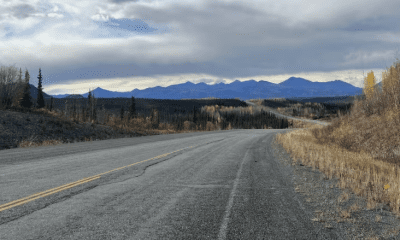Business and Economy
From law enforcement to agriculture, drones can be big business in Canada
TORONTO – The sight of camera-equipped drones swooping through the sky may sound like something straight out of spy movies, but one Canadian film company is already making use of them behind the scenes.
For the past three years, Kaspi Films has been using drone technology to shoot everything from Toyota car commercials to aerial videos for real estate companies.
Matt Bujok says the film industry has been an early adopter in the commercial potential of unmanned aerial vehicles (UAVs) as studios are drawn to their versatility and low cost compared to filming with traditional jib arm cranes, or helicopters.
“People are a little bit of hesitant (at first) because they haven’t seen it done before, and there are some misconceptions of drone use, especially for the public,” said Bujok, a producer at the Oshawa, Ontario-based company. “But it’s definitely growing.”
The remote-controlled planes, which can be a size small enough to fit in the palm of your hand to ones the size of a Boeing 737 jet, initially gained their controversial reputation when the U.S. military used them for surveillance or to drop bombs in areas considered dangerous or inaccessible for regular fighter jets.
But that negative perception may be changing as government and businesses find new uses for the flying robots, which can be customized with information-gathering tools such as cameras and navigational systems.
The RCMP has been using them since 2010 to capture photographs and videos to help with traffic accident reconstruction and assist in search and rescue efforts. Online retailer Amazon is testing them to use for door-to-door deliveries. And in any park across Canada, there may be a hobbyist flying one to show off to her friends.
“It really is a disruptive technology. It’s changing the game,” said Stewart Baillie, chairman of the Ottawa-based not-for-profit Unmanned Systems Canada.
The national industry group says unmanned aircraft, equipped with cameras, are used by farmers to study the topography of their lands in order to better learn how to apply fertilizer and pesticides. They’re also used by government and universities to research and survey wildlife, such as tracking the nesting habits of birds or how marine traffic can disrupt the path of humpback whales.
Baillie said the appeal of using unmanned aircraft appeals to businesses as it’s typically cheaper and easier than hiring someone to physically do the same job. Most drones range in price from a few hundred dollars for personal aircraft up to $200,000 for commercial grade units and can be operated with a controller, similar to ones used for video games, or by a tablet or an iPhone. The images are then streamed to a computer in real-time.
“Unmanned aircraft have the promise of providing more data for a variety of applications that you wouldn’t even consider using manned aircraft for. It opens up a whole bunch of applications to understand things better, for sectors and companies who were never thinking in those directions before,” he said.
The market potential for drones was enough to draw Klever Freire away from his high-paying dream job designing planes for aerospace giant Bombardier Inc.
His startup, DreamQii, housed at Ryerson University’s incubator, Digital Media Zone, is set to launch its tablet-controlled, GPS-enabled drones in June.
Freire, 30, said the units, which look like miniature helicopters, can be outfitted with GoPro cameras and will retail for around $1,200. He’s counting on the low price-point and the ease of use to be draws for both businesses and individuals, who may use them filming family events, such as weddings, or doing extreme sports like mountain climbing and surfing.
Last year, Transport Canada issued 945 Special Flight Operation Certificates (SFOC), a more than 500 per cent jump from 155 certificates in 2011. The certificates are required to fly unmanned aircraft for commercial purposes and typically detail where the UAVs can be flown, by whom, and during what time period.
Transport Canada states that UAVs cannot be flown higher than 120 metres, to limit safety concerns with other aircraft, and are required to be within the line of sight of the pilot or someone who is in contact with a pilot. Those who fly model aircraft weighing less than 35 kilograms for recreational purposes do not require an SFOC.
Roger Haessel, the chief executive at the Canadian Centre for Unmanned Vehicle Systems, is opening the first training centre in North America for UAV operators later this year.
Haessel said proper education on how to fly a drone and awareness of their capabilities can encourage more industries to use the technology, but one of the biggest concerns remain balancing privacy concerns with commercial and recreational interests.
“It’s certainly something that we’re going to see more discussion of,” he said. “What are appropriate guidelines on the privacy front?”






















